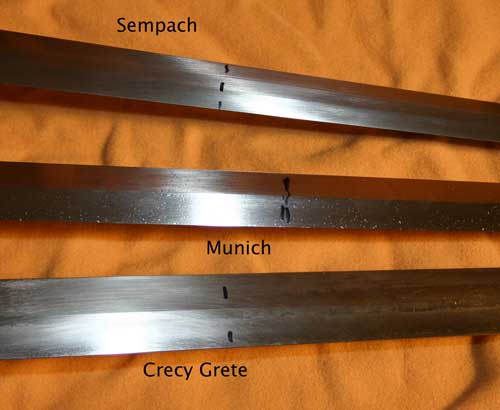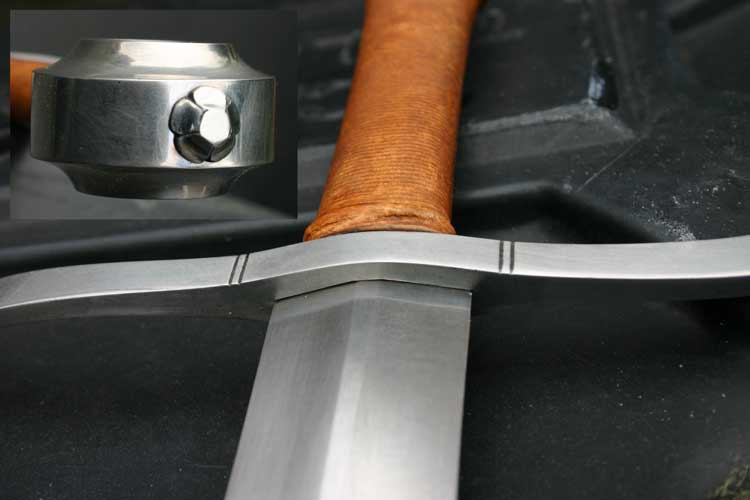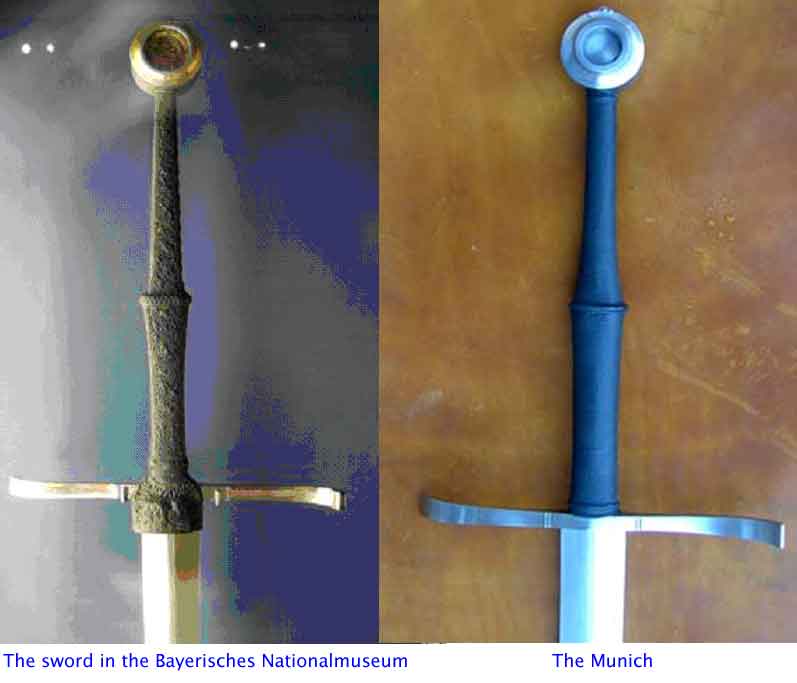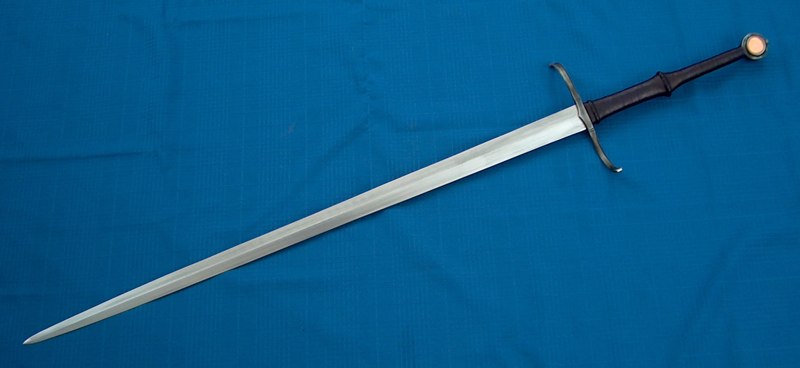Since I first saw the concept sketch for the Munich I considered it beautiful and perhaps appropriate to associate with a female gender. The Munich is agile and sleek in appearance, but this is very deceptive. It is surprisingly strong for its slender profile and subtle curves, lethally quick, and more vicious a cutter-killer than I expected. In relation to other swords I know well, it seems like a turbocharged Sempach.
Other than the grip length and an extra inch of blade, the Munich’s published statistics are pretty close to those of some “war swords” such as the Sempach and the 1st generation Crecy Grete. The longer grip really changes a lot of handling perceptions in a way that the statistics don’t convey. German longsword style drills with various hand positions are addictive. Rotations were so fast it generated noises similar to the release of a bow string or sling shot bullet passing by. The Munich’s grip shape and pommel seem just right to my hands (very average “large” glove sized hands) regardless of spacing. The pommel is similar to that of the Sovereign. It is a good candidate for customization with a medallion or jewel. The rivet block has a very nice touch (based on the original) that could easily have been omitted and saved for the museum line.
The Munich basically has a straight (not hollow ground) diamond cross section all of the way down the blade, and is fairly thick (3/8” thick at the spine near the guard.) This gives surprising stiffness and makes me confident it could thrust and half sword fairly well. This is no estoc, however, but a sword all of the way up the blade which could draw blood easily anywhere along its edge. At the CoP, the cutting edge is about 1-1/8” wide (shown between a 1st Generation Crecy Grete blade 1-1/4” wide, and a Sempach about 1” wide) is an approximate average between great swords I have seen that were called good cutters, versus more acutely pointed.
I constructed a target by wrapping a composite of soaked newspapers, cardboard, and duct tape around a 3/4” diameter green limb of tough holy wood. I proved that with a known cutter (my Albion Knight) I could not do much better than get 1/8” into the wood. The Munich did about the same, but the effort seemed lower. The Knight simply stopped at the limb. The power developed by the Munich's speed was such that the garbage can I affixed the target to (filled with a couple of large logs) was knocked over and sent debris sprawling across the driveway.
The Munich is a versatile sword that I suspect will be interpreted and utilized differently by people according to their own preferences and strengths. Peter Johnson likens it to well rounded warrior; “A man that belongs to the higher circles of politics, but that is at the same time a man of action. A pragmatic realist and a romantic at the same time. A warrior that has not lost his sence of beauty and proportion. Perhaps a cruel man and probably ruthless, but not an uncivilized brute.”
I find myself increasingly interested in the original museum sword and will post a little extra on that which is not commonly stated.





